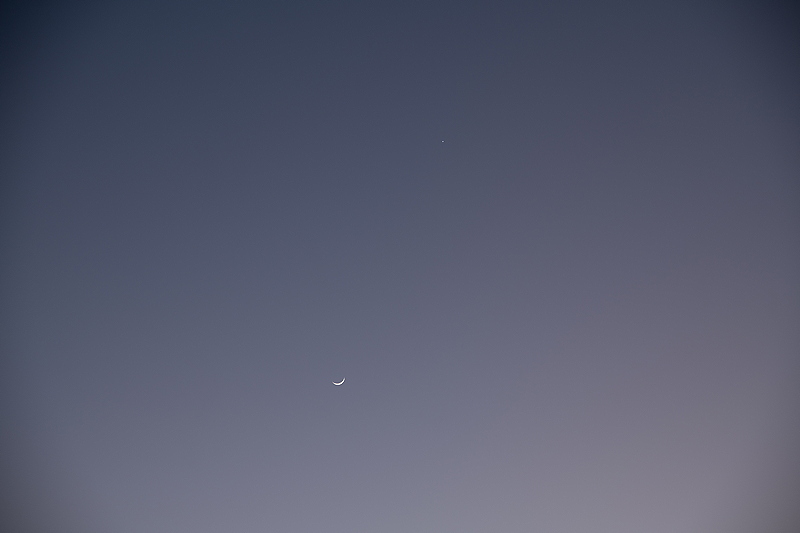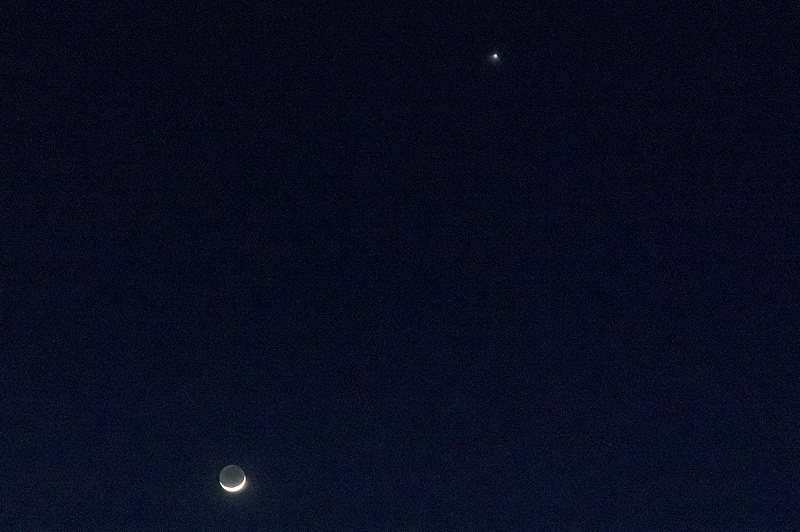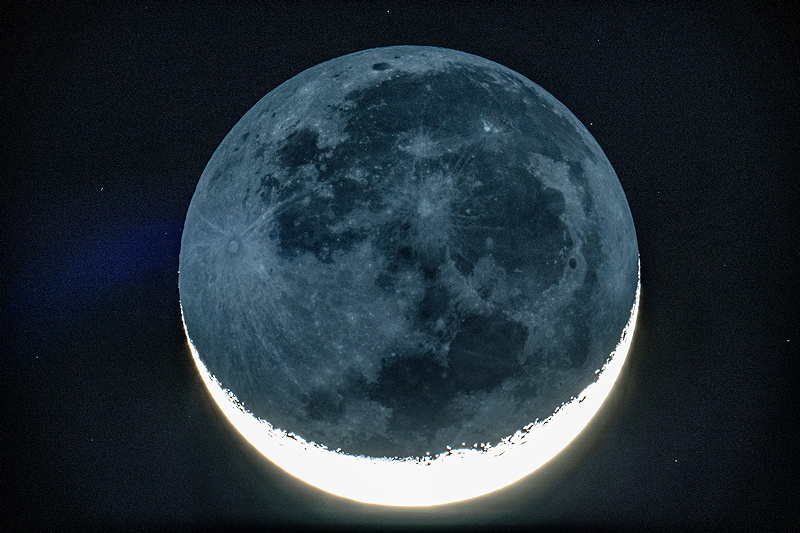Earthshine Visibility Project,
Horsehead Nebula, M66 Galaxy, iPhone Owl Nebula
Posted: 27 February 2020
Tuesday, 25 February 2020, was clear but windy. Clear sky but windy conditions continued on Wednesday, 26 February. The wind calmed down somewhat as sunset approached.
|
Open: Wednesday, 26 February 2020, 1806 MST Temperature: 59°F |
Session: 1444 Conditions: Clear, breezy |
Equipment:
12" f/8 LX600 w/StarLock
2" 24mm UWA eyepiece
2" 30mm eyepiece
12x50 binoculars
Camera:
D850 DSLR
iPhone 11 Pro Max
SYNCed the observatory clock to WWV time signals for my Earthshine observations. Also SYNCed the D850 DSLR time.
1812 MST: LX600 ON, StarLock OFF, High Precision OFF.
Viewed Venus, 102X
I then began doing observations for the Earthshine Visibility Project. Anyone can do valuable "citizen science" and contribute to this worthwhile effort. See the link for more details.
Here is the report I submitted:
1815 MST: something seen, naked eye. Checked with 12x50 binoculars. Contrast nonexistent, but I seemed to be able detect the dark limb directly opposite the fat part of the illuminated side. Optical illusion?
1818 MST: sunset.
1820 MST: dark side seemed slightly darker than surrounding twilight sky, naked eye. No details seen.
1827 MST: hint of Earthshine visible, naked eye. Maria faintly visible, 12x50 binoculars.
1836 MST: entire disk seen, naked eye. No details.
1839 MST: Earthshine easily seen in 12x50 binoculars.
1842 MST: hints of "splotchiness" (Maria) on dark side, naked eye.
1832 MST: took this photo of the western sky with the Moon and Venus using the D850 DSLR (focal length 70mm). The photo accurately shows the Moon that I was seeing, with the hint of Earthshine being visible.

1901 MST: D850 DSLR photo (FL 70mm, cropped) of the crescent Moon, Earthshine, and Venus.

1904 MST: viewed the Moon, 102X. Earthshine was very nice.
1911 MST: mounted the D850 DSLR at prime focus of the 12" telescope. Took this photo (1/320sec, ISO 400).

This photo (1/2sec, ISO 1600) shows the Earthshine.

1825 MST: dome OFF.
1931 MST: the breezes were getting stronger.
1935 MST: focused on the star Rigel, locked the mirror, and SYNCed the AutoStar on Rigel.
1938 MST: StarLock ON.
Slewed to IC434 (Horsehead Nebula) and began doing some framing test exposures (StarLock autoguided, 1 minute, ISO 6400, White Balance 5560K). As seen in these two photos, I had an issue with flare from bright stars just outside of the camera field-of-view.


I finally managed to frame the Horsehead with minimal flare and by cropping (and rotating) the image I was able to get this result (StarLock autoguided, 5 minutes, ISO 6400, White Balance 5560K). Seeing was not very good and autoguiding was erratic at times so I was happy to be able to get this 5 minute exposure.

2003 MST: StarLock OFF.
Removed the camera and tried to see the Horsehead Nebula, 102X and 81X. No joy. It is a difficult object to see visually, but I have seen it occasionally from Cassiopeia Observatory.
2015 MST: dome ON.
SYNCed on the star Regulus.
2020 MST: High Precision ON.
Viewed M97 (Owl Nebula), 81X. Then mounted the iPhone on the 30mm eyepiece using the Levenhuk adapter.
2028 MST: StarLock ON.
Owl Nebula, iPhone 11 Pro Max, afocal 81X, StarLock autoguided, NightCap Camera (Long Exposure, Light Boost, ISO 12500, 1 second, 1 minute exposure, 1X lens).

I also tried to image M108 (galaxy) but that image wasn't as good I as hoped. Will try again on a future session when it is higher in the sky.
Viewed M108 (galaxy), 81X and 102X. Next, viewed M105 (galaxy), 102X. The galaxies NGC3389 and NGC3381 were also visible in the eyepiece. M105 was too low for imaging. Viewed M66, 102X. I was hoping to see the recent Supernova 2020cwh, but I didn't. SYNCed on M66 and began waiting for it to rise a little higher in the eastern sky.
Mounted the D850 DSLR at prime focus. Focused on Regulus and locked the mirror.
By the time M66 had risen high enough for imaging the wind had picked up. Seeing was terrible. I was not able to get a long exposure of M66. This was the only useable image I managed to get (StarLock autoguided, 60 seconds, ISO 6400, WB 5560K, cropped).

The supernova would have appeared about 8 o'clock from the galaxy core in the spiral arms there. Apparently the supernova has already faded.
2132 MST: StarLock OFF.
2142 MST: LX600 OFF.
2150 MST: took a SQM reading.
|
Close: Wednesday, 26 February 2020, 2154 MST Temperature: 45°F |
Session Length: 3h 48m Conditions: Clear, windy, SQM 21.13 |
Comments are welcome using Email. Twitter users can use the button below to tweet this report to their followers. Thanks.
Cassiopeia Observatory Home Page
Copyright ©2020 Michael L. Weasner / mweasner@me.com
URL = http://www.weasner.com/co/Reports/2020/02/27/index.html
